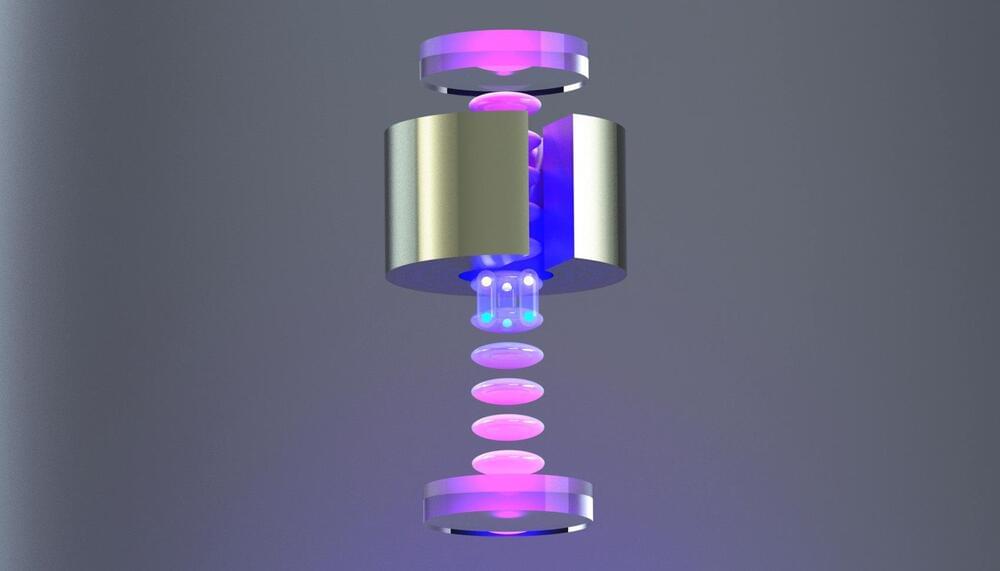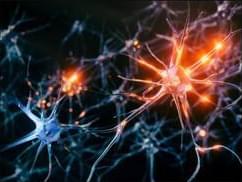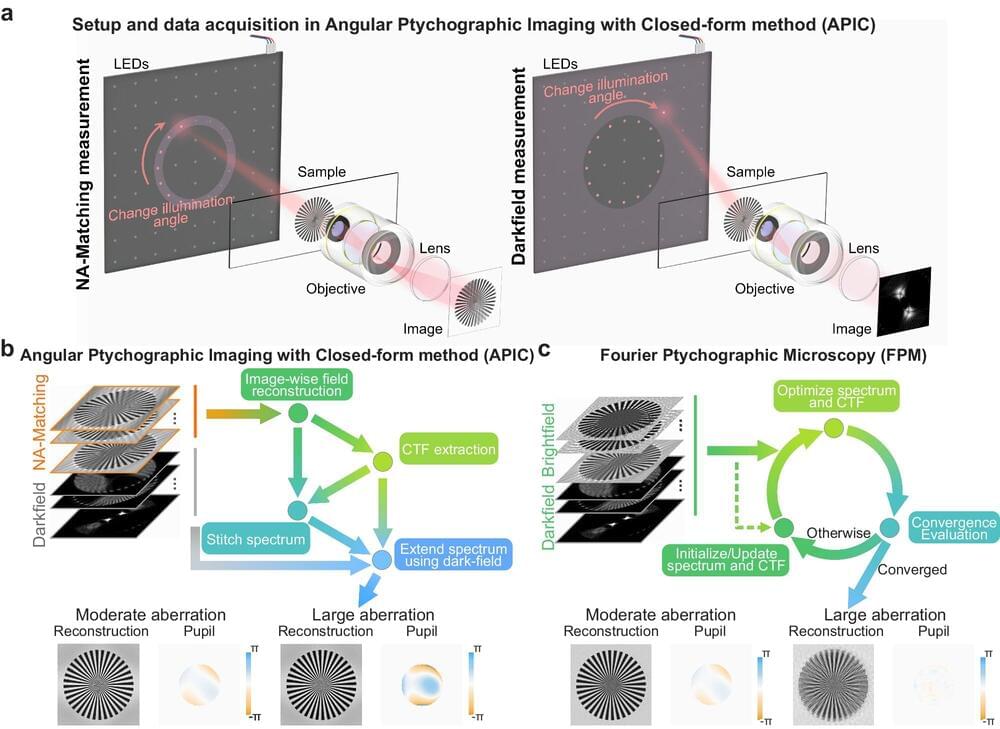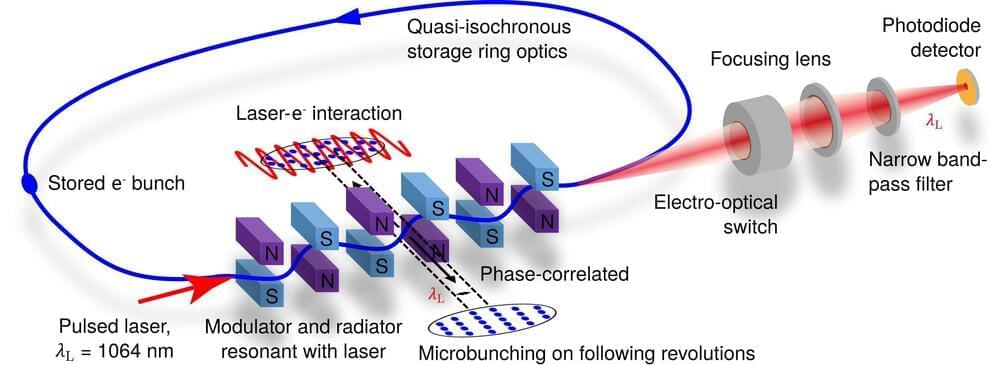Aussie scientists have developed a new gene-editing technique that could be a major breakthrough. It could allow scientists to make accurate and more significant changes to DNA.
#Science #GeneEditing #genes
Aussie scientists have developed a new gene-editing technique that could be a major breakthrough. It could allow scientists to make accurate and more significant changes to DNA.
#Science #GeneEditing #genes

Nice!
Researchers at UC Berkeley have enhanced the precision of gravity experiments using an atom interferometer combined with an optical lattice, significantly extending the time atoms can be held in free fall. Despite not yet finding deviations from Newton’s gravity, these advancements could potentially reveal new quantum aspects of gravity and test theories about exotic particles like chameleons or symmetrons.
Twenty-six years ago physicists discovered dark energy — a mysterious force pushing the universe apart at an ever-increasing rate. Ever since, scientists have been searching for a new and exotic particle causing the expansion.
Pushing the boundaries of this search, University of California, Berkeley physicists have now built the most precise experiment yet to look for minor deviations from the accepted theory of gravity that could be evidence for such a particle, which theorists have dubbed a chameleon or symmetron.

Whether it’s a first-time visit to a zoo or when we learned to ride a bicycle, we have memories from our childhoods kept well into adult years. But what explains how these memories last nearly an entire lifetime?
A new study in the journal Science Advances, conducted by a team of international researchers, has uncovered a biological explanation for long-term memories. It centers on the discovery of the role of a molecule, KIBRA, that serves as a “glue” to other molecules, thereby solidifying memory formation.
“Previous efforts to understand how molecules store long-term memory focused on the individual actions of single molecules,” explains André Fenton, a professor of neural science at New York University and one of the study’s principal investigators. “Our study shows how they work together to ensure perpetual memory storage.”

For hundreds of years, the clarity and magnification of microscopes were ultimately limited by the physical properties of their optical lenses. Microscope makers pushed those boundaries by making increasingly complicated and expensive stacks of lens elements. Still, scientists had to decide between high resolution and a small field of view on the one hand or low resolution and a large field of view on the other.
In 2013, a team of Caltech engineers introduced a microscopy technique called FPM (for Fourier ptychographic microscopy). This technology marked the advent of computational microscopy, the use of techniques that wed the sensing of conventional microscopes with computer algorithms that process detected information in new ways to create deeper, sharper images covering larger areas. FPM has since been widely adopted for its ability to acquire high-resolution images of samples while maintaining a large field of view using relatively inexpensive equipment.
Now the same lab has developed a new method that can outperform FPM in its ability to obtain images free of blurriness or distortion, even while taking fewer measurements. The new technique, described in a paper that appeared in the journal Nature Communications, could lead to advances in such areas as biomedical imaging, digital pathology, and drug screening.

When ultrafast electrons are deflected, they emit light—synchrotron radiation. This is used in so-called storage rings in which magnets force the particles onto a closed path. This light is longitudinally incoherent and consists of a broad spectrum of wavelengths.
Its high brilliance makes it an excellent tool for materials research. Monochromators can be used to pick out individual wavelengths from the spectrum, but this reduces the radiant power by many orders of magnitude to values of a few watts only.
But what if a storage ring were instead to deliver monochromatic, coherent light with outputs of several kilowatts, analogous to a high-power laser? Physicist Alexander Chao and his doctoral student Daniel Ratner found an answer to this challenge in 2010: if the electron bunches orbiting in a storage ring become shorter than the wavelength of the light they emit, the emitted radiation becomes coherent and therefore millions of times more powerful.


The American computer scientist and techno-optimist Ray Kurzweil is a long-serving authority on artificial intelligence (AI). His bestselling 2005 book, The Singularity Is Near, sparked imaginations with sci-fi like predictions that computers would reach human-level intelligence by 2029 and that we would merge with computers and become superhuman around 2045, which he called “the Singularity”. Now, nearly 20 years on, Kurzweil, 76, has a sequel, The Singularity Is Nearer – and some of his predictions no longer seem so wacky. Kurzweil’s day job is principal researcher and AI visionary at Google. He spoke to the Observer in his personal capacity as an author, inventor and futurist.
Why write this book? The Singularity Is Near talked about the future, but 20 years ago, when people didn’t know what AI was. It was clear to me what would happen, but it wasn’t clear to everybody. Now AI is dominating the conversation. It is time to take a look again both at the progress we’ve made – large language models (LLMs) are quite delightful to use – and the coming breakthroughs.

“Automated logistics roads are designed to get the most out of road space by utilizing hard shoulders, median strips, and tunnels beneath the roadway,” Muramatsu explained.
ALSO READ: A New 6G device is Created by Japan That is 20 times Faster Than 5G Technology
The project involves installing automated conveyor belts in tunnels beneath major highways, on above-ground tracks in the middle of roads, and along hard shoulders. This innovative approach aims to optimize existing road space and enhance freight movement efficiency.
GXO and Agility Robotics debut humanoid Digit robots in a Spanx warehouse, a first for commercial robots-as-a-service (RaaS) deployment.

Transcend us, AI friends!
👉 Researchers from Harvard University, UC Santa Barbara, and Princeton University show in a new study that generative AI models can outperform their human trainers through “transcendence”
New research shows that generative AI models can surpass their human trainers. The researchers call this phenomenon “transcendence” and demonstrate it using the example of chess.
AI models are typically trained to imitate human behavior. However, is it possible for these models to outperform their human “trainers” in certain areas? Researchers from Harvard University, UC Santa Barbara, and Princeton University show in a new study that this is possible through what they call “transcendence.”
The researchers trained a transformer on chess games played by players with limited skill levels. The resulting model, called “ChessFormer,” was able to play better than all the players in the training dataset in some cases.